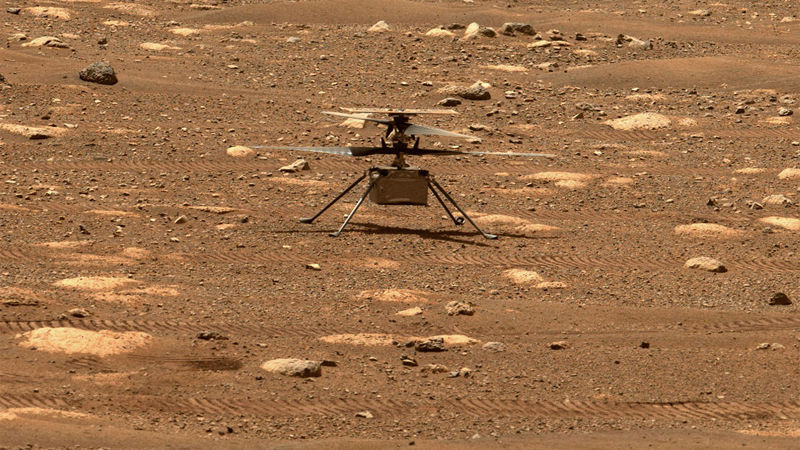More than a century ago the first propeller-driven aircraft took off on Earth.
On Monday, another one took flight for the first time on a different planet.
NASA’s experimental Mars Helicopter, Ingenuity, successfully lifted off the ground at 3:34 a.m. EDT — that’s around noon local Martian time in Jezero Crater, the current location of Ingenuity and the Perseverance rover. The flight data, sent from Perseverance and relayed by the Mars Reconnaissance Orbiter, was transmitted back to Earth almost three hours later.
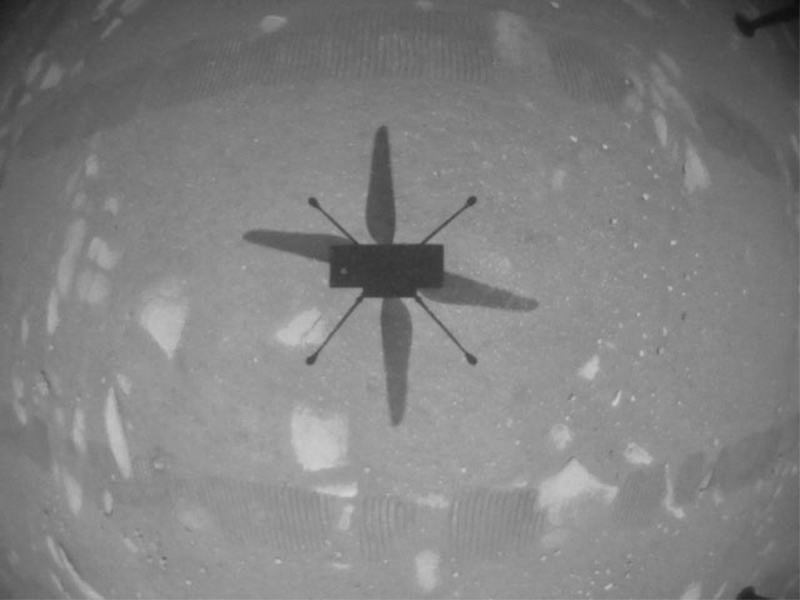
Ingenuity’s first flight took it straight up about 10 feet, where it hovered, made a small victory turn-in-place for Perseverance’s cameras, then settled back to the ground about 40 seconds after liftoff. Not a flight endurance record by tried-and-true Earth aviation standards, but certainly a one-small-hop-for-a-robot, one-giant-leap-for-interplanetary-exploration achievement.
Ingenuity’s maiden flight had been scheduled for April 11, but was postponed when a software glitch failed to engage the system’s flight mode during a pre-flight rotor test. After some analysis and software testing, NASA Jet Propulsion Lab engineers worked out a fix and ran further tests before mission controllers approved another flight attempt.
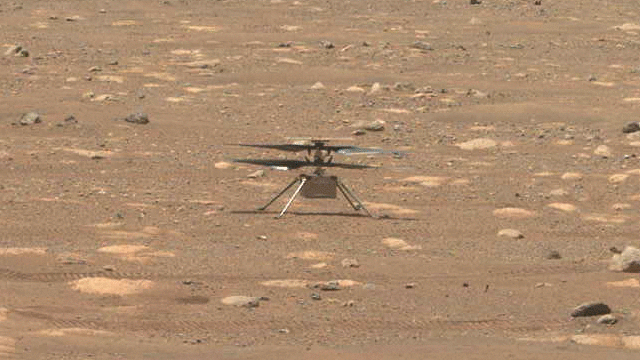
With more test flights planned in days ahead, engineers at JPL, located in Pasadena, California, will have further opportunity to hone their brand new Martian aviation skills.
Proof of Concept
The Mars Helicopter is an add-on experiment to last year’s Perseverance mission. Equipped with only an onboard computer, two small cameras and a wireless link to Perseverance, Ingenuity carries no science instruments; its entire mission is to provide proof of concept for aerial exploration of Mars, and maybe of other worlds. Even if it never leaves the ground again, Ingenuity has still achieved the mission’s primary goal.
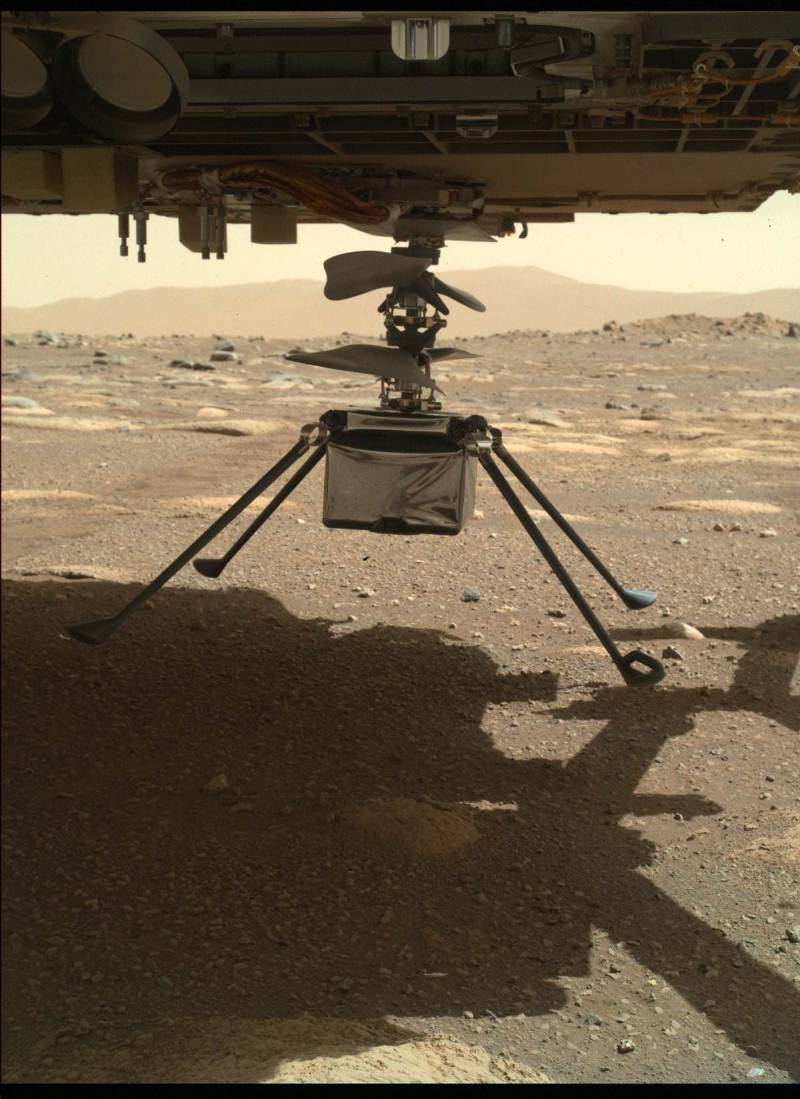
As scientists and engineers conceive new designs for robots to move around the surfaces of other worlds, which to this point has all been done by wheeled rovers, Ingenuity’s successful flight opens a path to greater freedom for humans to explore areas where wheels cannot carry us.
To achieve this flight, engineers at JPL had to meet some steep design challenges, not the least of which was to build a helicopter that can fly in Mars’ thin atmosphere, which is about a hundredth the density of Earth’s at sea level. Even helicopters on Earth that have reached the highest mountain peaks such as Mount Everest, where the air is still one-third as dense as it is at sea level, have strained the limits of conventional engine and rotor blade technology.
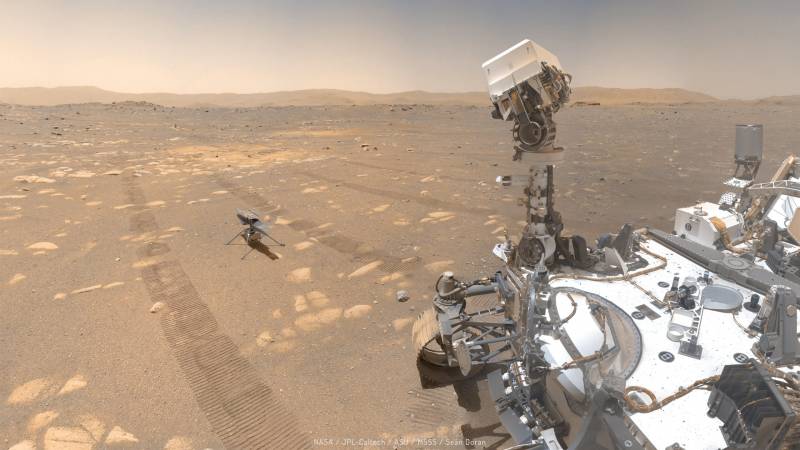
Ingenuity’s specially designed twin counter-rotating propeller blades must spin at around 2,500 revolutions per minute to lift the 1.8 kilogram (4-pound) craft off Mars’ surface. Mars’ lower surface gravity, which is 38% of Earth’s, makes the feat easier, but the low air density underscores the unearthly challenges of exploring other planets.
Future missions may include airborne drones to perform aerial reconnaissance, collect rock and soil samples over a wider area, or even independently explore a much vaster region than a wheeled rover crawling carefully through an obstacle-laden terrain can.

Perseverance landed on Feb. 18 in Mars’ Jezero Crater, on a mission to search for clues to ancient life locked in the rocks and soil of a dry lakebed and a formation of sediments washed into it long ago, when Mars possessed a wetter, more Earth-like climate.
